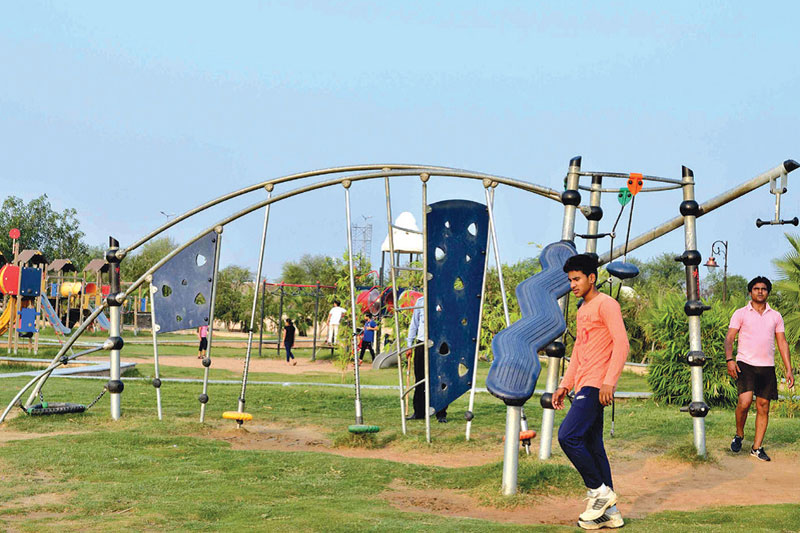Design
Baghs to Socialist Ideology | Rajat Kant
LA 53 |
|
|
|
|
|
|
PROJECT: Jamneshwar Mishra Park
LOCATION: Lucknow
TOTAL AREA: 300.00 Acres
CLIENT: Lucknow Development Authority
LANDSCAPE CONSULTANT: Prof. SurinderSuneja, for School of Planning & Architecture, New Delhi
DURATION: 2013-2016
COST: 370.00 Crores |
|
|
From times immemorial, the creation of urban parks has always been driven by two motives- a political agenda and the provision of spaces in the public realm. Jamneshwar Mishra Park addresses this political ideology while simultaneously allowing society the space to flourish, thus being the grey zone between these two extremes. The city of Gardens is home to this park that is testimony to Lucknow's social goals in carrying with it an undercurrent of the city's temperament.
'The most important lesson in park history is that form always reflects immediate social goals, an ideology about order, and an underlying attitude toward the city.'
This line by Galen Cranz in her path breaking text on the changing roleof urban parks probably epitomizes the inception and materialization of all the urban parks in Lucknow, which through history has always been a city of gardens. Be it the nawabs, or the British or even the post-colonial attempts at creating public open spaces, the immediate goal about an ideology perpetuated through the creation of public realm has always been the underlying thought. The nawabsgave us the baghs, the British gave us the Residency and Dilkusha Garden and the post-independence attempts have been the AmbedkarSthal, DeenDayalUpadhyay Park, Lohia Park and now the Janeshwar Mishra Park. Every political entity has tried to use the park
as a vehicle of perpetuation of a thought process. The underlying current has always been a show of power, whereas the subtle one is of creating spaces in the public realm.
To that end, the Janeshwar Mishra Park, in recent history, probably does the balancing act and tries to do both-addressing the political ideology and simultaneously creating a public realm. It is indeed a brave attempt. One can see the political tones, but below the surface there is a microcosm teeming with people of all ages, class and gender. Little ones are playing, the elder ones are jogging and the seniors just soaking. Although the planning is a bit fragmented, whereby most of the public activities are clustered in its eastern part, while the western one seems relatively undisturbed, the ceremonial axis somehow appears to divide the park into two zones and is asymmetrically laid out. The eastern one for the intense activities and the western one for relaxation. One only wishes that the ceremonial axis could have tried to bind the two instead of dividing them. Or been shifted more towards the west.
|
|


|
|

| |
|
|
|